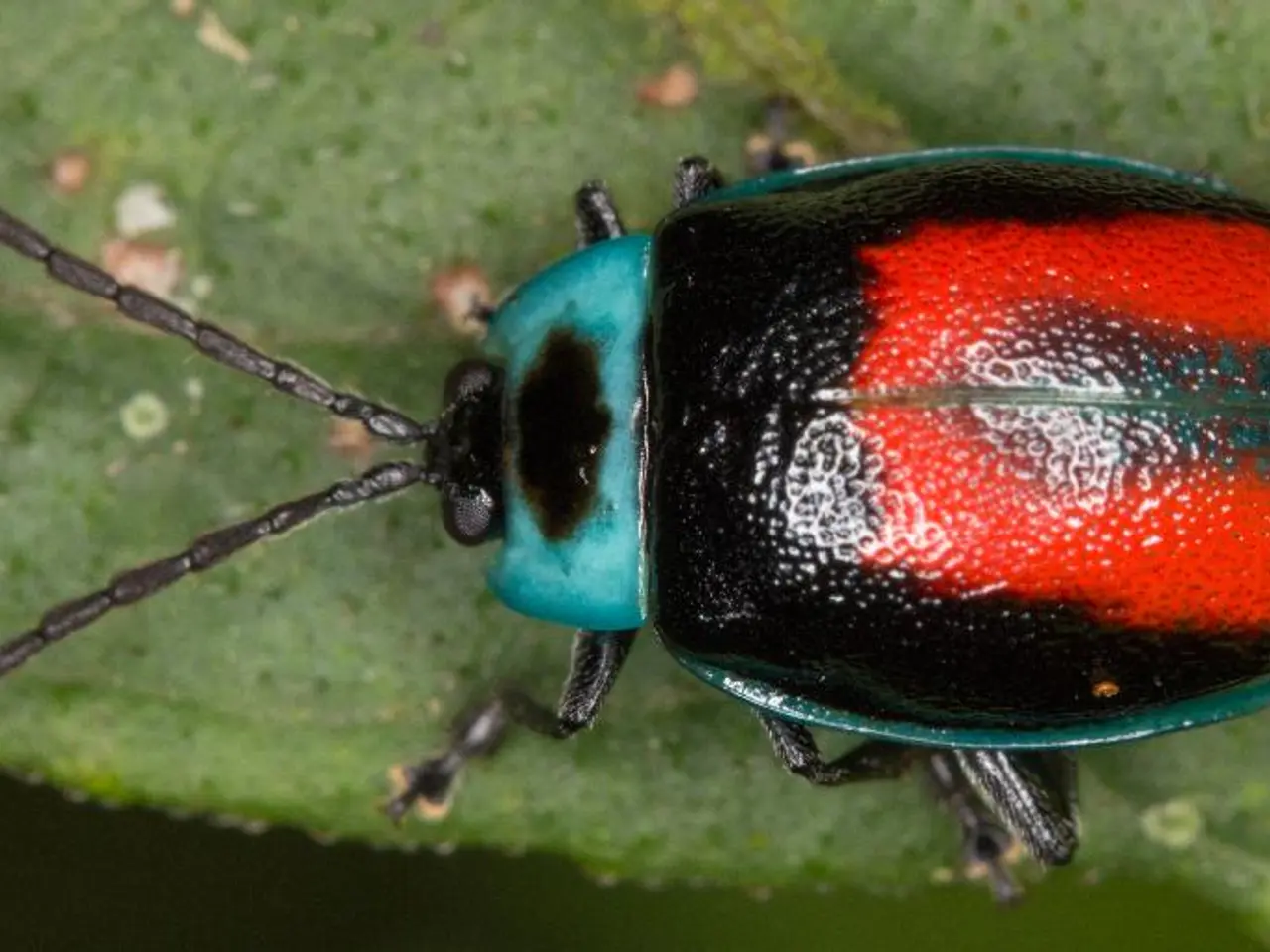Recognize and Safeguard Your Blooms: Common Insect Pests and Plant Diseases to Avoid
In the world of horticulture, flowers are often susceptible to various diseases and pests that can cause significant harm. Here's a rundown of some common issues and how to manage them.
Bacterial Diseases
Bacterial leaf spot, a common issue in warm, wet conditions, affects both flowers and vegetables. The disease is characterised by small water-soaked spots that darken with yellow halos, eventually leading to holes in leaves and raised, scabby lesions on fruits. To control bacterial leaf spot, avoid overhead watering, sanitise tools, implement insect control, and remove infected parts promptly.
Bacterial wilt and other bacterial infections can cause wilting and leaf spots in ornamental plants. These often enter through wounds and spread rapidly. Management focuses on sanitation and removing affected plants.
Viral Diseases
Viral infections in flowers cause symptoms such as twisted growth, yellow mosaic patterns on leaves, and general decline. These diseases are mainly spread by sap-sucking insects like aphids or thrips. Once infected, plants cannot be cured, so prevention is key. This involves controlling insect vectors, removing infected plants promptly, and planting resistant varieties when available.
Common Pests
Aphids are among the most common flower pests, feeding on the sap of tender leaves and stems. Caterpillars, such as cutworms, can quickly defoliate plants, attacking them directly at the soil's surface. Thrips, a small insect, feed on the sap of plants, causing chlorosis or the development of small yellow spots on infected leaves.
Other Diseases
Various types of blight are among the most common diseases of flowers, leading to a rapid decline in plant health and the loss of the plant. Leaf spot diseases are often caused by a fungal infection, characterised by dark spots surrounded by a thin yellow margin. Understanding each potential cause is key for a proper diagnosis of plant problems.
Powdery mildew is a common flower disease, characterised by a white, dust-like film covering the leaves of plants. Rot is an advanced symptom of disease, often occurring in soils that drain poorly or remain waterlogged for extended periods of time. All matter infected by blight should be removed from the growing space immediately, and growers hoping to save plants that have started to show signs of rot disease will need to act posthaste, as time is of the essence.
Wilt
Wilt can be caused by both insects and pathogens, with prolonged wilting likely the result of disease. Wilt diseases include bacterial leaf scorch, fusarium wilt, and verticillium wilt. Borers, insects whose larvae burrow into the stems, branches, stalks, or even roots of plants, are of special concern in the case of wilt.
Identifying leaf spot diseases can be difficult, as spotting is a symptom of different problems. However, understanding the potential causes and taking prompt action can help in managing these issues and ensuring the health of your flowering plants.
Home-and-garden enthusiasts should be mindful of bacterial leaf spot, a common disease that affects both flowers and vegetables, as well as various bacterial infections causing wilting and leaf spots in ornamental plants. Implementing proper gardening techniques, such as avoiding overhead watering, sanitising tools, implementing insect control, and removing infected parts promptly, can help manage these bacterial issues. Additionally, viral infections in flowers, like those causing twisted growth, yellow mosaic patterns, and general decline, should be prevented by controlling sap-sucking insects, removing infected plants promptly, and planting resistant varieties when available.




